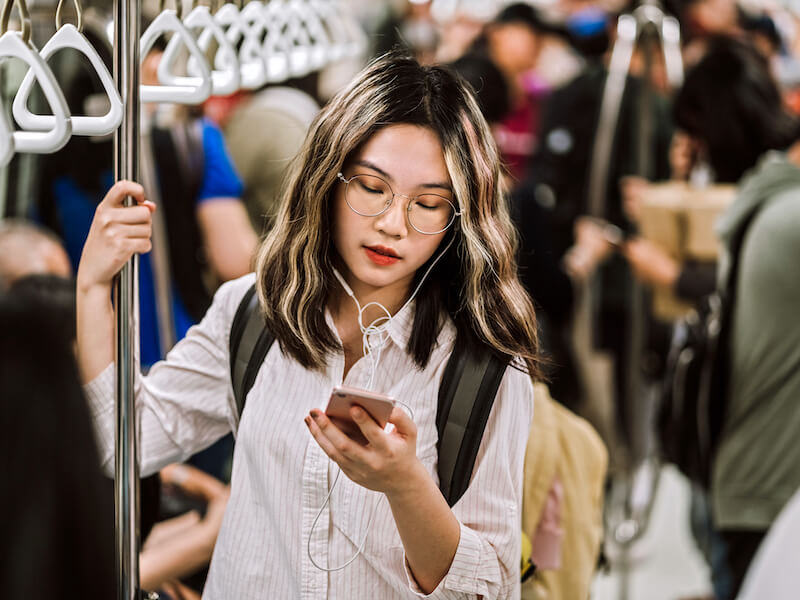
Hearing loss is usually considered an older person’s problem – in fact, it’s estimated that almost 50% of people aged 75 and older copes with some kind of hearing loss. But despite the fact that in younger individuals it’s totally preventable, research shows that they too are at risk of developing hearing loss.
One study of 479 freshmen across three high schools revealed that 34% of those students showed indications of hearing loss. The cause? Scientists believe that earbuds and headphones linked to mobile devices are contributing to the issue. And younger people are not the only ones at risk.
What causes hearing loss in individuals under 60?
If other people can hear your music, it’s too loud and that’s a basic rule for teenagers and everybody. If you listen to sounds above 85dB (around the volume of a vacuum cleaner) for extended periods of time, your hearing can be damaged. The majority of mobile devices can go well above 105dB. Used in this way, 4 minutes is enough to cause injury.
While this sounds like common sense stuff, the truth is that kids spend upwards of two hours every day on their devices, frequently with their earphones or earbuds plugged in. They’re playing games, watching videos, or listening to music during this time. And this will only increase over the next several years, if we’re to believe current research. Studies show that smartphones and other screens trigger dopamine production in younger kids’ brains, which is the same response caused by addictive drugs. Kids’ hearing will suffer as it becomes harder to get them to put their screens down.
Young people are at risk of hearing loss
Clearly, hearing loss presents multiple difficulties for anybody, regardless of age. Younger individuals, however, face added issues regarding academics, after-school sports, and even job prospects. Students with hearing loss face a particularly difficult time hearing and understanding concepts. It also makes playing sports much harder, since so much of sports involves listening to coaches and teammates giving directions and calling plays. Young adults and teenagers joining the workforce can face unnecessary roadblocks caused by hearing loss.
Hearing loss can also lead to social problems. Kids with damaged hearing have a harder time interacting with peers, which frequently leads to social and emotional issues that require therapy. People who suffer with hearing loss often feel isolated and experience mental health problems like depression and anxiety. Mental health treatment and hearing loss management frequently go together and this is especially true with kids and teenagers in their early developmental years.
Avoiding hearing loss when you’re young
The first rule to observe is the 60/60 rule – devices and earbuds should only be used for 60 minutes a day at 60% or less of the maximum volume. Even at 60%, if other people can still hear the sound, it needs to be turned down.
It also may be smart to change back to over-the-ear style headphones and stop using earbuds. Earbuds put directly in the ear can actually generate 6 to 9 extra decibels when compared to traditional headphones.
Generally, though, do what you can to control your child’s exposure to loud sounds during the day. You can’t regulate everything they do during school or on the bus, so try to make the time they’re at home free of headphones. And if you do suspect your child is experiencing hearing loss, you should have them examined right away.
References
https://www.nidcd.nih.gov/health/statistics/quick-statistics-hearing
https://newsie.co.nz/news/163631-deaf-foundation-blames-earbuds-phones-teens-hearing-loss.html
https://time.com/4989275/young-children-tablets-mobile-devices/
https://www.healthyhearing.com/report/52500-Hearing-loss-among-kids-and-teens
https://hearinghealthfoundation.org/blogs/protecting-your-hearing-means-protecting-your-mental-health
https://kidshealth.org/en/teens/earbuds.html